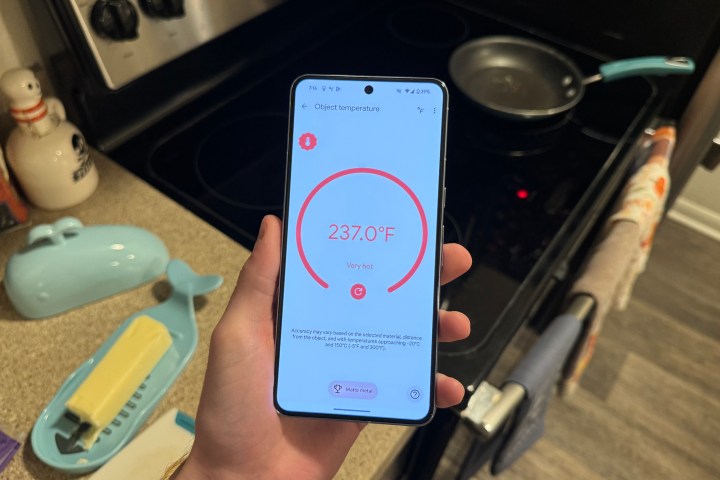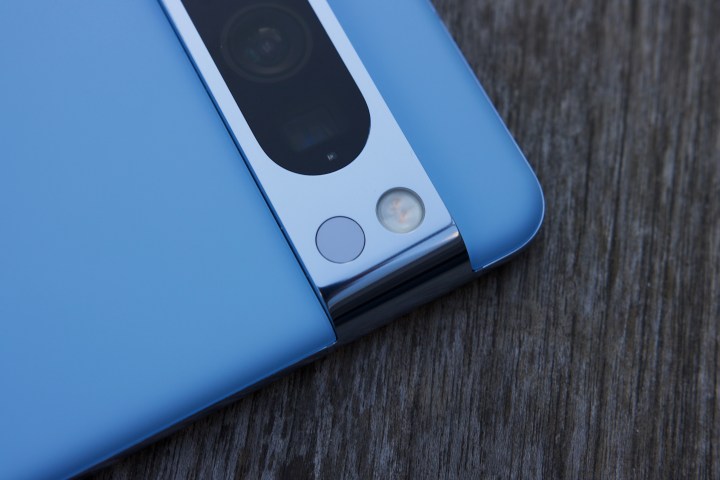
One of the most surprising additions to Google’s Pixel hardware in recent years is temperature sensing. The Google Pixel 8 Pro comes armed with a temperature sensor that can measure the temperature of objects simply by “scanning” them from an optimum distance within the five-centimeter range. Google says the sensor is good for “beverages, cooking pan, water temperature, and more.”
The smartphone community, however, is seemingly hell-bent on relegating it to gimmick status. But average Pixel 8 Pro owners are finding cool ways to use it. As detailed in this Reddit post, one Pixel 8 Pro user was stuck in a stormy situation that took out the power supply for 36 hours, putting them in a quandary regarding the status of food items kept in an out-of-power refrigerator.
“Using it, I could easily identify food items that were nearing their melting point, allowing me to make informed decisions about what to discard and what to keep,” reads the post. Another user mentioned in the comments section that readings from the Pixel 8 Pro’s onboard sensor were “within a degree” compared to an infrared thermometer when measuring a pan’s heat and the situation inside a refrigerator.

“I used mine to confirm the temp of the boiler for my HVAC system. It was on the nose,” notes another person in the reply segment. A separate Reddit post describes how a Pixel 8 Pro user deployed the sensor to check how hot the sidewalk was before taking their pet for a walk.
The official Thermometer app that Google has released for the Pixel 8 Pro mentions that the sensor is good enough for a temperature range of -5 degrees Fahrenheit and 302 degrees Fahrenheit. However, the app warns that the accuracy might vary based on the size of the object and how close the temperature readings are compared to the sensor’s upper and lower limits.
Before you can measure the temperature values, the app lets you pick from 10 categories that include food and organic, beverages and water, cast-iron, glass, matte metal, shiny metal, and fabric, among others. There’s a clear distinction between shiny and matte surfaces since they radiate heat to different degrees, and the sensor readings have to be appropriately adjusted.

In my own brief tests in a room with the temperature set at 23 degrees Centigrade, the sensor’s reading mostly varied by one to three degrees when compared to readings taken with a thermal gun on household items such as ceramic cups, bags, PC monitors, glass windows, table surfaces, and charging adapters, among others. Similar was the case when measuring a person’s skin temperature by pointing the Pixel 8 Pro’s temperature sensor at the forehead.
Those are not bad figures by any stretch of the imagination. But do keep in mind that the sensor is yet to be approved by the Food and Drug Administration (FDA) in the U.S., which means it is not advisable to use Google’s flagship for skin temperature measurement.
I recently interviewed experts at the University of Washington’s Paul G. Allen School of Computer Science and Engineering about an app that can “reliably measure body temperature and detect fever symptoms” using the onboard sensors fitted inside most smartphones. The research is quite fascinating.
Editors' Recommendations
- I tested the Pixel 8 Pro and iPhone 15 Pro. This one has the best camera
- This one Google Pixel 8 Pro feature is driving me crazy
- Google’s Pixel phones are in trouble
- I just spent $100 on Google Photos for a ridiculous reason
- I refuse to buy the Google Pixel 8 Pro, and it’s all Google’s fault
